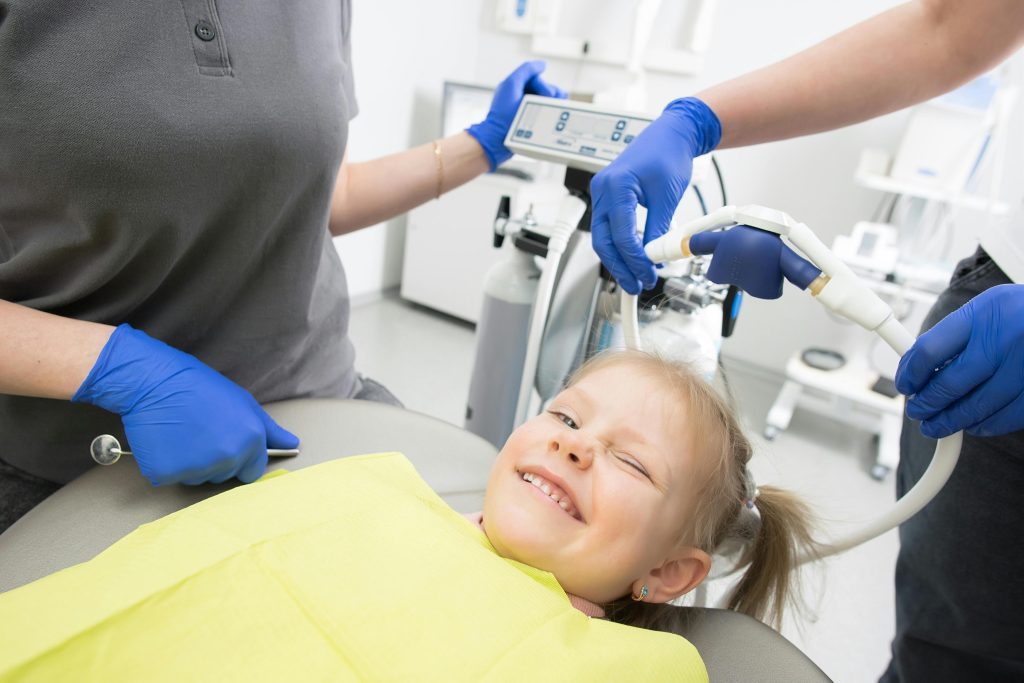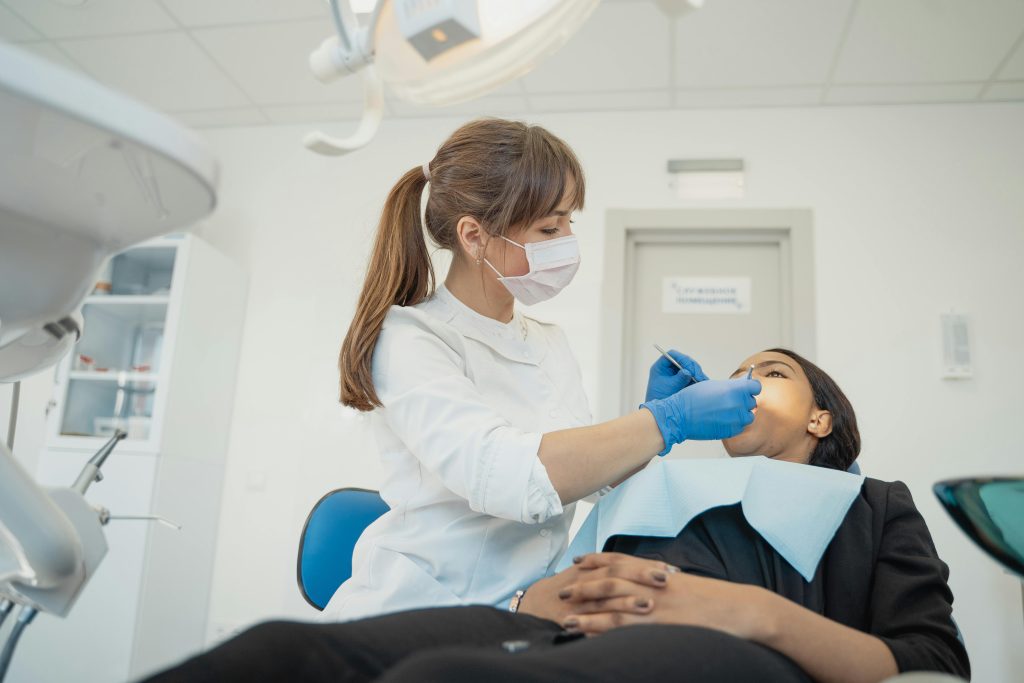Oral health solutions are worth every penny. Good oral health is essential to overall well-being. Oral health solutions are expensive. The cost of dental health solutions will vary depending on how much effort you put into your oral health. You can use these oral health solutions.
1. Begin Early

It is best to make sure that your children visit a paediatric dentist as soon as their teeth begin to erupt. Experts recommend children see a paediatrician at around one year of age, as soon as the majority of teeth have erupted. The earlier you start, the better. You can work with a paediatric dentist to care for your child’s teeth.
Early childhood dental care can help prevent childhood cavities. To protect the teeth of young children, your dentist may recommend fluoride and sealants. Early dental care will help your child develop good oral hygiene.
Children’s dental offices create an environment that is welcoming and friendly to children. This helps reduce their fear. Paediatric dental practices aim to make their patients feel comfortable, from colourful waiting rooms to compassionate and friendly dental staff. The paediatric dentist’s office is made more fun by the inclusion of toys, books and television screens.
Cavities can be prevented 100%. Your child’s dentist can help them avoid tooth decay. A dentist will evaluate your child and determine if early intervention like orthodontic treatment is necessary. The best way to reduce the cost of dental solutions for your child is by partnering with a local dentist.
2. Preventive Care
Preventive care from a general dentist you trust is the best way to reduce costs for oral health solutions. Regular dental visits (experts recommend twice a year) can help you save money on oral health care. When you visit your dentist regularly, a cleaning is usually scheduled.
Professional dental cleaning removes plaque that is hard to remove with brushing alone. A dental hygienist, a paraprofessional, uses special tools and methods to remove plaque that feeds bacteria that cause cavities. The dental hygienist is a para-professional who works closely with your dentist to maintain the health of your teeth. These services, which range from ultrasonic scale to air polishing, remove surface stains and plaque.
The foundation of good oral health is preventive dentistry. Preventive dental care is the cornerstone for dental health, and focuses on proactive measures that prevent dental problems before they occur. Preventive care is based on regular dental cleanings and checkups. This allows dentists to detect any early signs of dental issues such as gum disease, oral cancer, or cavities.
The dentist will make recommendations for treatments to improve oral health during the examination. The dentist will check your teeth for any cavities or other dental issues. Early intervention can reduce costs by addressing any problems. Both children and adults need regular dental examinations. This is the best method to maintain good oral health.
3. Restorative Dentistry

Restorative dental care is essential to improving the look and function of your smile, and reducing the risk of complications. Untreated dental problems can cause gum disease, infection and other oral health issues. Missing teeth can affect healthy teeth.
Some solutions can help restore your missing teeth. Dental implants have become the new standard for replacing missing teeth. Implant dentists are specialists in tooth replacement. Implants are the closest thing you can get to natural teeth.
Implants are titanium posts that are surgically inserted into the jawbone. Implants are titanium posts that are surgically implanted into the jawbone. This placement has two purposes. First, it provides a mounting surface for the artificial teeth. The second function is to serve as a placeholder for the natural tooth root. A dental implant can help prevent bone loss that is often associated with tooth loss.
The implant will become a part of the bone structure. Bone will grow around the implant. This method of tooth replacement is hailed as the most efficient way to replace missing teeth. Implants are designed to feel and function like natural teeth. They can restore both function and appearance. Although implants can be expensive, most patients feel that they are worth it.
4. Orthodontics
The latest oral health trend is teeth aligners. Aligners are a great way to straighten teeth and correct overbites and underbites. Aligners are a great alternative to traditional metal braces. They look almost invisible. Aligners are a popular choice for teens and adults to improve their smile.
Orthodontics is a field that has evolved a lot in the past two decades. More options are available than ever before for correcting a smile with orthodontic treatments. Orthodontic treatment is not only used to improve the smile of patients, but also their oral health.
Orthodontic treatment improves speech clarity and oral health by aligning the teeth and jaws in a proper occlusion. Oral health can be affected by dental issues that need to be corrected. Overcrowding, for example, can make it hard to brush and floss your teeth and maintain their health.
Oral health solutions that correct overbites and underbites as well as overcrowding can be less expensive than you might think. These corrections improve your smile and your oral health, both of which are difficult to quantify. A straight smile is a life-changing experience.
5. Sedation Dentistry
Sedation dentists are able to help you if you have a fear of the dentist that prevents you from receiving the care you require. Sedation dentistry helps patients receive the treatment they need, without stress or panic. It is not necessary to forgo dental care. You have choices.
Dentists who offer sedation dentistry can help their patients to relax and enjoy dental procedures. Sedation dentistry offers a range of options, from mild sedatives like nitrous oxide to intravenous sedation. It allows patients to receive necessary dental treatment without any fear. Sedation dentistry may cost more, but for those who fear going to the dental office it’s a worthwhile investment.
Sedation dentistry improves patient comfort through the reduction of discomfort and pain. Sedatives reduce pain sensitivity and make it easier to endure dental procedures such as root canals or implant placement. It is possible to get the treatment you need without any anxiety.
All your dental work may be performed under sedation in many instances. Sometimes all of your dental work may be done in one appointment to avoid having to be sedated more than once. Sedation dentistry could be the best solution for you. This service is not offered by all dentists, but a general dentist may be able to recommend one.
6. Cosmetic Dentistry
Cosmetic dentists offer services that improve the appearance of your teeth. Some dentists also ensure your dental health. Cosmetic dentistry can fix discolouration, tooth shapes, tooth sizes, and much more. Cosmetic imperfections like stained, chipped or misshapen teeth can affect the appearance of your smile and impact self-esteem.
Veneers (tooth coverings that are attached to the natural teeth), cosmetic bonding and more. Treatment plans are tailored to the individual patient’s smile goals. Dental insurance usually does not cover the cost of cosmetic procedures. Oral health solutions for cosmetic procedures usually cost money out of pocket.
Cosmetic dental procedures improve the appearance of your smile and improve dental health and function. Dental crowns and bridges, for example, restore damaged or absent teeth and improve chewing and speech abilities. These services, while often viewed as optional, are vital to dental health.
Cosmetic treatments can improve your smile and your well-being. You will smile less if you don’t like your smile. You might feel less confident. These treatments aim to improve your smile and boost your confidence. You will smile more when you are happy with your smile. Cosmetic dentists won’t perform any cosmetic dentistry until you have healthy teeth.
7. Professional Collaboration
Most people think that dentists are only concerned with your teeth. Dentists do care about your teeth but that’s not all they look at when you visit them. Dentists check the entire mouth for abnormalities. Dentists check for signs of cancer, including oral cancer.
Oral cancer screenings are routinely performed by dentists during dental examinations. The screening involves visually inspecting the lips, tongue and other oral tissues to look for abnormalities, such as lumps, sores, white or red patches or changes in texture. Dentists often find Herpes. Your oral health is a great indicator of your overall health.
Dentists work with other professionals. If your dentist observes anything unusual in your throat, he will refer you to an ENT doctor. The dental exam is much more than just examining your mouth. This is the first step in identifying other health issues.
A dentist and plastic surgeon may work together to repair damage caused by an accident or a congenital condition. They collaborate with many professionals to improve appearance and health. To maintain good health, you must visit the dentist regularly. Oral health solutions are priced differently depending on your problem, the treatment you receive, and if you have to consult with other specialists.
8. Periodontics
Gum disease is common in people older than thirty. Gum disease is often not recognised until it has become a serious problem. Gum disease, if not treated, can lead to tooth loss, bone loss, and other serious dental health issues.
Gum disease is a progressive condition. Gingivitis, the first stage of gum disease, is characterised by gum inflammation (gingiva), and some discomfort. You may see blood when brushing your teeth in the early stages. The symptoms of the disease will worsen as the disease advances.
Gingivitis, if left untreated, can progress to periodontitis. This is a more advanced form of gum disease. Periodontitis is the destruction of supporting structures for the teeth including the periodontal ligament and bone. Periodontitis can cause receding gums and persistent bad breath. It may also lead to loose teeth or changes in the bite alignment.
A gum disease that has advanced is a painful condition. It can be difficult to speak or eat when you have gum disease. Oral health solutions become more expensive as the disease progresses. It is important to maintain gum health through regular dental visits. Early intervention treatments can be more affordable. Treatment options are available at every stage of gum disease.
Scaling and root planing may be recommended for individuals with gingivitis and early-stage periodontitis to remove plaque and tartar below the gumline. Antimicrobial agents, such as gels, mouthwashes or antibiotics, may be prescribed in order to control oral bacteria and gum inflammation. Surgery may be required in severe cases. Oral health solutions to treat gum disease will vary in price depending on the type and number of treatments.
Everyone should budget for oral health care. Oral health care solutions can be expensive depending on what you need. To keep costs down, you should visit your dentist regularly. You can also plan ahead for these costs. You will be able to plan your finances better if you visit your dentist twice a year. Find out more about oral health solutions and their costs today.
